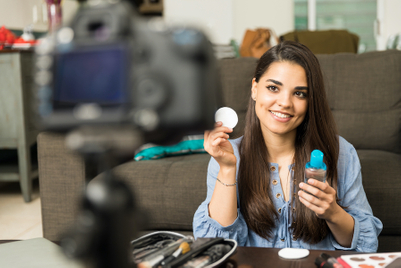
In APAC, a renowned mobile-first region, the popularity of short-form, mobile-friendly video content has skyrocketed in recent years. Considered easily digestible, immersive and engaging, more consumers are spending time watching video-led content formats, with APAC expecting to exceed two billion digital video viewers by 2022. In fact, Southeast Asian countries are reporting much higher rates of video viewing on their smartphones compared to the West. As more welcome the shift towards video-led content, short-form videos have now become the perfect entryway for brands to reach and connect with current and prospective audiences.
However, incorporating video content into creative marketing strategies is not as straightforward as one might assume. Brands will first need to understand the unique appeal of short-form videos and how they can leverage such characteristics. Guided by this understanding, they can employ the best practices when it comes to producing short-form video content, such as ensuring a wide content variety, keeping the focus on the audience and optimising videos to capture attention.
The appeal of short-form video creatives
Short-format videos continue to push the boundaries of traditional media and present a refreshing alternative to how we consume content. While there is no fixed definition as to how long short-form videos are, it is generally agreed that such videos are usually two-and-a-half-minutes long, and often far less. With a relatively short duration, such videos often have to illustrate their point in a matter of even seconds. These time constraints mean that short-form videos have to provide bite-sized information and are easily digestible, which makes it one of the most engaging content formats for a time-starved audience.
As authenticity continues to play a key role in building brand love, consumers are drawn to brands that share relatable content. With short-form videos, brands can showcase behind-the-scenes snippets and anecdotes of their business, to humanise the brand and prevent portraying to consumers the impression of a faceless corporation. Knowing that there are real individuals, stories and points of commonality behind the brand helps to create deeper emotional connections with consumers, which in turn lead to interactions that are more organic, interesting and relatable.
The lines between being a consumer and a content creator have blurred as online editing tools become more readily accessible. Platforms like TikTok have drastically eased the barriers to content creation with a comprehensive suite of in-app editing features, making it all too easy for consumers to create their own short-form videos. With content creation autonomy and a constantly growing pool of user-generated content, users are able to amplify their voice on the platform, making it a truly engaging experience as compared to just consuming content, and adding to the sense of ownership and belonging when using such apps.
Best practices for video-content development
Brands do not need to restrict their content strategies based on their industry and can look to produce a wide range of content, both in terms of themes and format. For example, beauty brands do not have to rely exclusively on makeup tutorials to showcase their products. Instead, they can explore other ideas to feature a broader range of their products in different real-life settings, including the likes of outfit lookbooks and interactive videos.
Moreover, brands can take advantage of the immersive nature of videos to build greater resonance with audiences by showcasing assorted real-life scenarios. Nativex’s creative studio TopWorks worked with Ares Chronicles, a massively multiplayer online role-playing game (MMORPG), to showcase real-life scenarios of employees getting caught while playing games at work. Injecting humour to such scenarios strengthens the sense of familiarity for viewers, who are likely to have encountered similar situations before.
As an extension of varying content types, brands can also tap on trends and join viral challenges, which have proven especially effective on platforms such as TikTok. Since online challenges are often industry-agnostic, brands can easily leverage the rapid increase in popularity of new trends to reach more consumers, while driving brand awareness at the same time.
When it comes to crafting a content strategy, brands can be tempted to make the promotion of their latest product or service their key objective. However, this may not always sit well with consumers, who will be quick to scroll past overly promotional videos. Brands should instead focus on cultivating the relationship between the consumer and the brand by centring their content around how they can bring greater value to their viewers. Some ways of doing so include understanding audience preferences in greater detail, as well as sharing brand stories and values. This will go a long way in establishing trust with their target audience and shape how the brand is viewed in the eyes of consumers.
Dwindling attention spans continue to be a key obstacle for brands, even for short-form videos. Brands will need to engage their viewers from the onset by grabbing their attention at the beginning of the video, from using punchy openings to employing eye-catching visuals. The content should ideally be compelling enough to have the audience stay on for the full duration of the video.
Another way to optimise videos would be to include closed captions for viewers who may be watching videos without audio. Brands can also draw viewers in by changing up how they present information to their viewers. They can highlight a known pain point or problem that consumers wish to resolve in the first few seconds and compel viewers to watch till the end for the solution.
Finally, videos can include a strong call-to-action (CTA) to maximise their conversion rates. These do not have to be limited to web pages; creatives that incorporate a compelling CTA while viewers are still engaged on their videos can drive more traffic towards their landing pages, increasing the likelihood of downloads.
As more consumers turn to video content for entertainment, brands cannot afford to ignore the meteoric rise of short-form videos. To reach and appeal to a wider audience, brands will need to bake short-form videos into their creative strategy and apply these best practices to produce relevant and engaging content.
Suki Lin in senior regional director, APAC, at Nativex.




.jpg&h=334&w=500&q=100&v=20250320&c=1)





+(900+x+600+px)+(3).png&h=334&w=500&q=100&v=20250320&c=1)
.jpg&h=334&w=500&q=100&v=20250320&c=1)





.png&h=268&w=401&q=100&v=20250320&c=1)
.jpg&h=268&w=401&q=100&v=20250320&c=1)
.png&h=268&w=401&q=100&v=20250320&c=1)
